Sloshing Simulation in Cylindrical Water Storage Tanks: An Abaqus Modeling Framework
€ 120.0
Liquid storage tanks have many applications in water supply systems and industrial environments. However, seismic damages to these tanks present significant challenges. One of the well-known damages observed in tanks during earthquakes is roof fracture caused by liquid sloshing. Sloshing is a phenomenon that liquid surface moves during seismic events. In this project, we used ABAQUS for the sloshing simulation in ground-supported cylindrical tanks. The tank experiences the acceleration of the El-Centro earthquake. The Abaqus sloshing simulation involves the calculation of Rayleigh damping factors and natural frequencies, employing the ALE meshing technique, and incorporating hourglass controls in Abaqus. We have suggested two ways for the tank sloshing simulation: one involves assigning a low viscosity to the water, and the other is applying Rayleigh damping factors with the assumption of an inviscid fluid. For verification, we modeled a water tank and compared the results with those obtained in the following paper:
“Parametric study on the dynamic behavior of cylindrical ground-supported tanks”
*Extra: Parametric Python Script for Sloshing Simulation*
Enhance your purchase with the parametric Python script, accompanied with a detailed PDF guide, as showcased in the gallery. At the start of the script, you can easily define parameters such as dimensions, element size, seismic record location, material properties, and more. Once configured, simply save the file and run the script in Abaqus. The model will be generated automatically, saving you time and effort, and the analysis will start immediately. This allows you to focus solely on reviewing the results.
| Expert | |
|---|---|
| Package Content |
.inp ,.py ,video file |
| Tutorial video duration |
25 minutes |
| language |
English |
| Level | |
| Package Type | |
| Software version |
2022 |
1. Introduction| Abaqus Sloshing Simulation
Earthquake ground acceleration can shake the walls and bases of liquid storage tanks. This affects the contained liquid due to fluid-structure interaction. Sloshing represents the movement of liquid during an earthquake, at its free surface. The amplitude of liquid sloshing can be high enough to impact the tank’s roof and cause damage. So, we must carefully design the freeboard and provide space for the liquid sloshing without impacting the roof. Note that, freeboard is a term that represents the height of the wall above the free surface of liquid. Numerical simulations offer a cost-effective and accurate way for tank sloshing simulation, as discussed in this project. The project focuses on the Abaqus sloshing simulation of ground-supported cylindrical tanks. We have chosen a water tank under the El-Centro earthquake and verified the slosh height with a reference solution.
2. Tank sloshing simulation (PDF File)
In this project, we will show you how to analyze the behavior of ground-supported concrete cylindrical tanks exposed to earthquake excitations. Throughout the tank sloshing simulation procedure, participants will become familiar with a lot of important aspects, such as using the Us-Up model, ALE adaptive meshing, mass scaling, defining earthquake acceleration data, and employing hourglass controls in Abaqus for the sloshing simulation in a water tank.
We employed the Rayleigh formulation to define the damping of the system in Abaqus. The Rayleigh damping factors are functions of the natural frequencies of the tank. So, we incorporated formulations from ACI standards to calculate the main natural frequencies. Thus, the project not only includes the tank sloshing simulation process in Abaqus but also covers theoretical aspects and basic formulations for calculating material properties.
For verification, we compared the liquid sloshing height over time with the reference solution obtained using ANSYS APDL software, as presented in the paper: “Parametric study on the dynamic behavior of ground-supported cylindrical tanks”.
2.1. PROBLEM DESCRIPTION
For verification of the tank sloshing simulation, we have chosen a cylindrical water tank made of concrete. Figure 1 presents the tank’s dimensions.
Figure 1: The geometry of the water tank
For verification with ACI standards and the reference paper, this example assumes a rigid wall with a modulus of elasticity ten times the normal concrete. Based on these assumptions and according to the reference paper, we have defined the material properties in Abaqus.
According to Figure 2, the base of the tank is fully constrained. We have applied the El-Centro earthquake acceleration, in the x-axis direction, to both the tank and its base. For verification of the tank sloshing simulation, the vertical component of earthquake acceleration is not included in the model.
Figure 2: The displacement boundary conditions applied to the tank and the base for the tank sloshing simulation
2.2. THEORETICAL AND BASE RELATIONS
Analytical models have been developed to describe the behavior of liquid storage tanks during earthquakes in a simplified manner. They allow for the calculation of parameters such as natural frequencies. The most well-known model is Housner’s, as implemented by ACI standards. The model divides the tank’s response into two components: convective and impulsive. The convective component accounts for the upper part of the liquid. The impulsive component represents the tank and bottom portion of the liquid. Figure 3 illustrates the Housner’s model.
Figure 3: The Housner’s model
The standards have provided formulations to calculate the natural frequencies for the impulsive and convective modes. We have discussed the formulations with details in the project. Then, we have calculated the Rayleigh damping factors and
from the following equation.
Here, and
are the damping ratios for the impulsive and convective parts.
and
represent the frequency for the first modes of vibration. We have considered the Rayleigh damping factors for the material properties in Abaqus.
- What is sloshing in liquid storage tanks?
- Why is numerical simulation of sloshing important?
- Is Abaqus applicable for simulating sloshing phenomena?
- 2.1. PROBLEM DESCRIPTION
- 2.2. THEORETICAL AND BASE RELATIONS
- 2.3. PROJECT PROCEDURES
- Problem description
- Modeling
- Results
2.3. PROJECT PROCEDURES
The tank sloshing simulation is performed in Abaqus CAE, without the need for Python scripts or Fortran subroutines. To do so, we have created a standard/Explicit model database. Then, we performed the tank sloshing simulation, step-by-step.
In summary, the tank sloshing simulation procedure is as follows:
- Setting up the software environment and choosing Abaqus units
- Creating the parts
- Defining the material and section properties
- Making an instance of the model in the Assembly module
- Creating a step, choosing the outputs, and applying the ALE adaptive meshing settings
- Defining the interactions
- Applying the boundary conditions and loads
- Generating elements and assigning element types
- Submitting the job
It was the general tank sloshing simulation procedure that you must execute. However, liquid sloshing is a complex problem that you need to consider some important aspects during the modeling procedure, as we have discussed in the following.
- Simulation of Water Behavior: One of the main challenges is modeling the behavior of water in a simplified manner. To address this, we have used the Us-Up model in Abaqus CAE, where the water is assumed to be incompressible for simplification. This assumption has a negligible effect on the results of tank sloshing simulation, as discussed in many published papers. A large number of these papers have assumed water to be incompressible, while others have assigned a very low value for viscosity. In this project, we have discussed the consideration of both inviscid and low-viscosity scenarios for water in Abaqus.
- The ALE Adaptive Meshing Technique: During an earthquake, the liquid inside a tank may undergo significant deformations. This can present a challenge for the numerical tank sloshing simulation, as mesh quality may be decreased during the solution. The issue is more critical for cylindrical tanks compared to rectangular ones, due to the irregular element shapes. This issue can impact results or even stop the solution due to poor mesh quality. One way to address this concern is by using the Arbitrary Lagrangian-Eulerian (ALE) adaptive meshing technique in Abaqus. This approach automatically enhances mesh quality during the solution. In this project, we have guided you through utilizing the ALE technique in Abaqus for the tank sloshing simulation.
- Utilizing Hourglass Controls: Water is a low-viscosity or even an inviscid liquid. When defining a low-viscosity material in Abaqus, the hourglass forces are insufficient to prevent hourglass modes. Therefore, we must utilize hourglass controls when defining the elements. This allows for the addition of stiffness to prevent hourglass modes. In this project, we have guided you step-by-step to utilize hourglass controls in Abaqus for the liquid sloshing simulation in a water tank.
- The Overall Procedure: We have discussed some challenges, that you will face up during the tank sloshing simulation. However, you may encounter additional complexities, including difficulties in defining fluid-structure interactions, loading, and applying boundary conditions. Therefore, we have included a workshop in this package to provide a step-by-step guide for Abaqus sloshing simulation in a ground-supported water tank. The tank is analyzed under the horizontal acceleration of the El-Centro earthquake. We hope it will be helpful for you.
3. Workshop (Video file): A Step-by-step Guide on the Simulation of Liquid Sloshing
In the workshop, we selected a cylindrical ground-supported water tank under the horizontal acceleration of the El-Centro earthquake. The workshop provides a full step-by-step guide through a video to simplify the simulation of liquid sloshing.
In the video, we used a dynamic explicit step and defined all the necessary outputs for the liquid sloshing. Then, the Adaptive Meshing technique was employed to improve mesh quality. Following this, we defined the interactions between the fluid and structure in a reasonably simple way. Then we applied the boundary conditions and loads, such as earthquake acceleration, gravity acceleration, and hydrostatic pressure. Moreover, the workshop guides you through the meshing process, considering the utilization of hourglass controls.
We verified the Abaqus sloshing simulation to ensure the accuracy of the modeling procedure. For verification, we have analyzed the behavior of a water tank and extracted the liquid sloshing height over time. As in the reference paper, just the horizontal component of the El-Centro earthquake is considered for the Tank sloshing simulation. We have compared the obtained results with the ANSYS APDL solution in the paper titled “Parametric study on dynamic behavior of cylindrical ground-supported tanks”. The paper is one of the well-known research projects that performed the sloshing simulation in cylindrical tanks.
It would be helpful to see Abaqus Documentation to understand how it would be hard to start an Abaqus simulation without any Abaqus tutorial.
One note, when you are simulating in Abaqus, be careful with the units of values you insert in Abaqus. Yes! Abaqus don’t have units but the values you enter must have consistent units. You can learn more about the system of units in Abaqus.
All the package includes Quality assurance of training packages. According to this guarantee, you will be given another package if you are not satisfied with the training, or your money is returned. Get more information in terms and conditions of the CAE Assistant.
All packages include lifelong support, 24/7 support, and updates will always be sent to you when the package is updated with a one-time purchase. Get more information in terms and conditions of the CAE Assistant.
Notice: If you have any question or problem you can contact us.
Ways to contact us: WhatsApp/Online Support/[email protected]/ contact form.
Projects: Need help with your project? You can get free consultation from us here.
- Online payment: with MasterCard, VisaCard and etc.
- Offline payment: In this payment method, you should pay via PayPal and send your payment receipt as an attached file in the offline payment form.
- via download link After purchase, a download link will be sent to you a zip file included training videos, documents and software files.
- Send us your machine ID
To access tutorial video run the .exe file on your personal pc and send the generated code to [email protected] and wait for your personal code, which is usable only for that pc, up to 24 hours from CAE Assistant support.
Here you can see the purchase process of packages: Track Order
1 review for Sloshing Simulation in Cylindrical Water Storage Tanks: An Abaqus Modeling Framework
Clear filtersYou must be logged in to post a review.

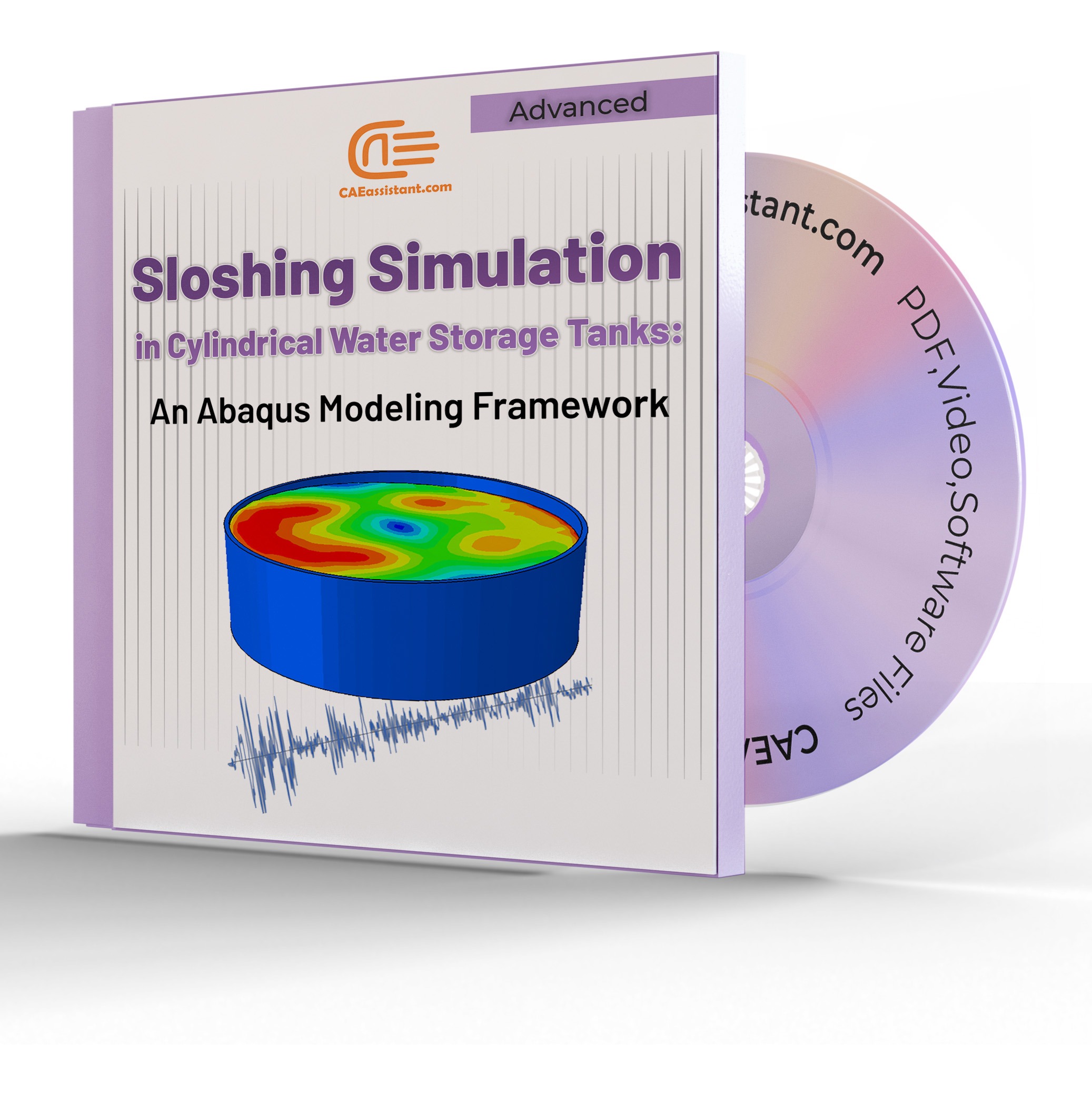
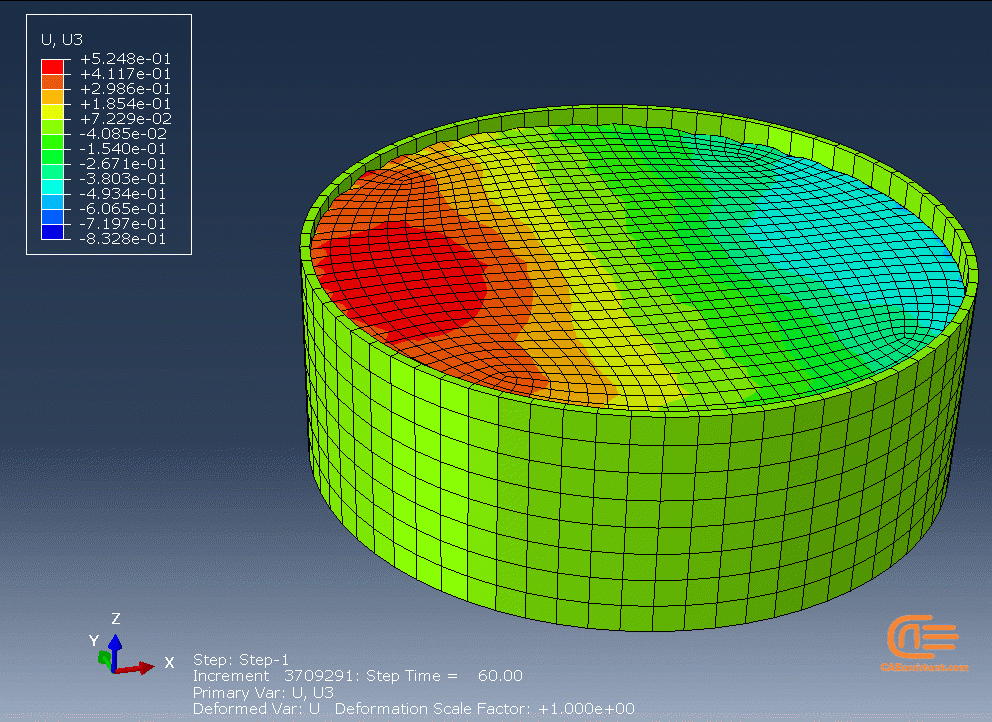
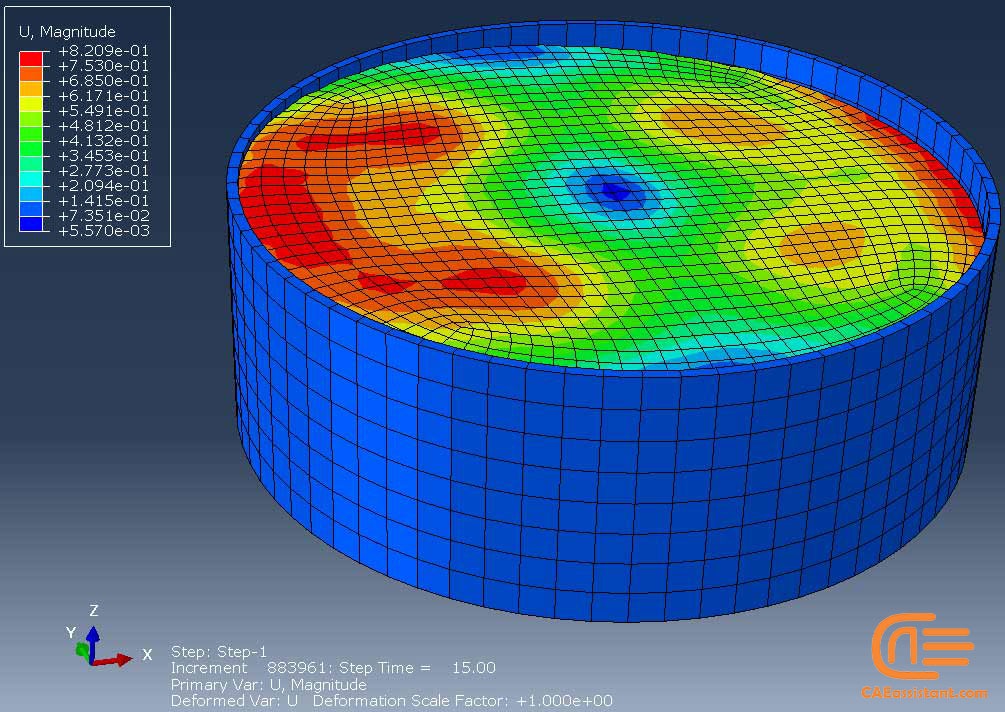
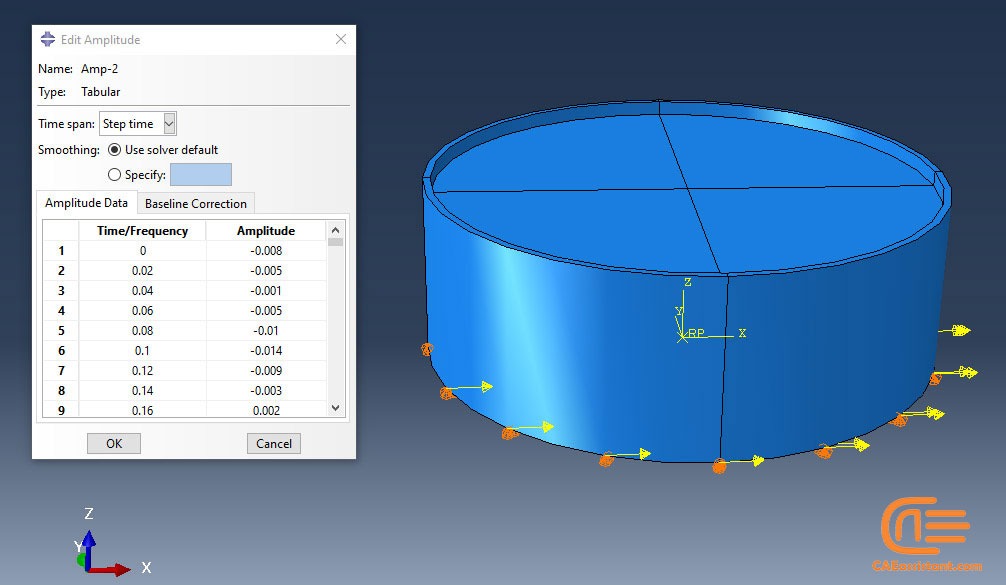
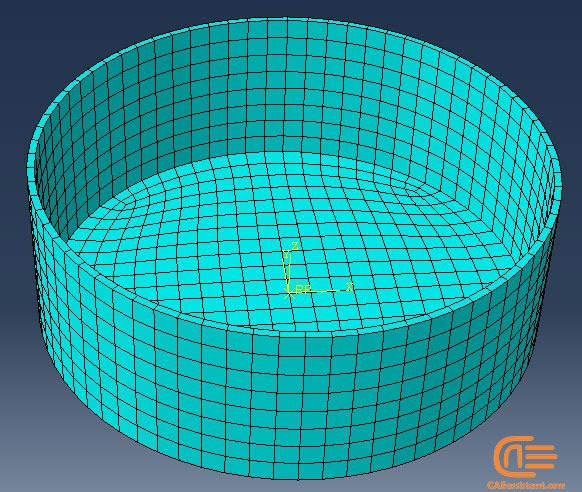
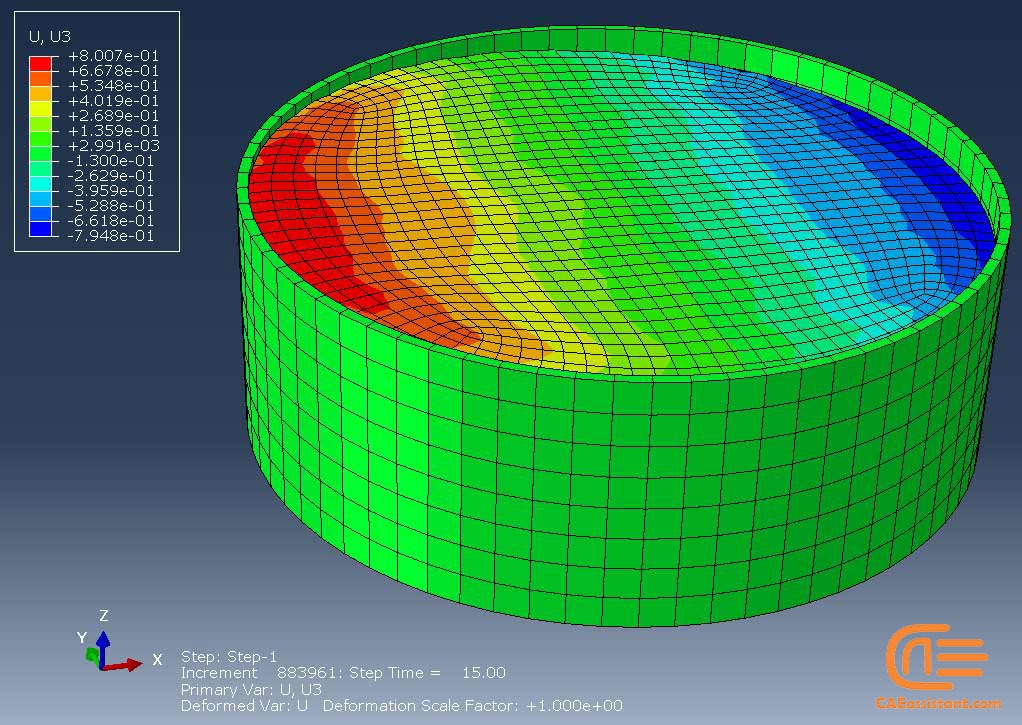
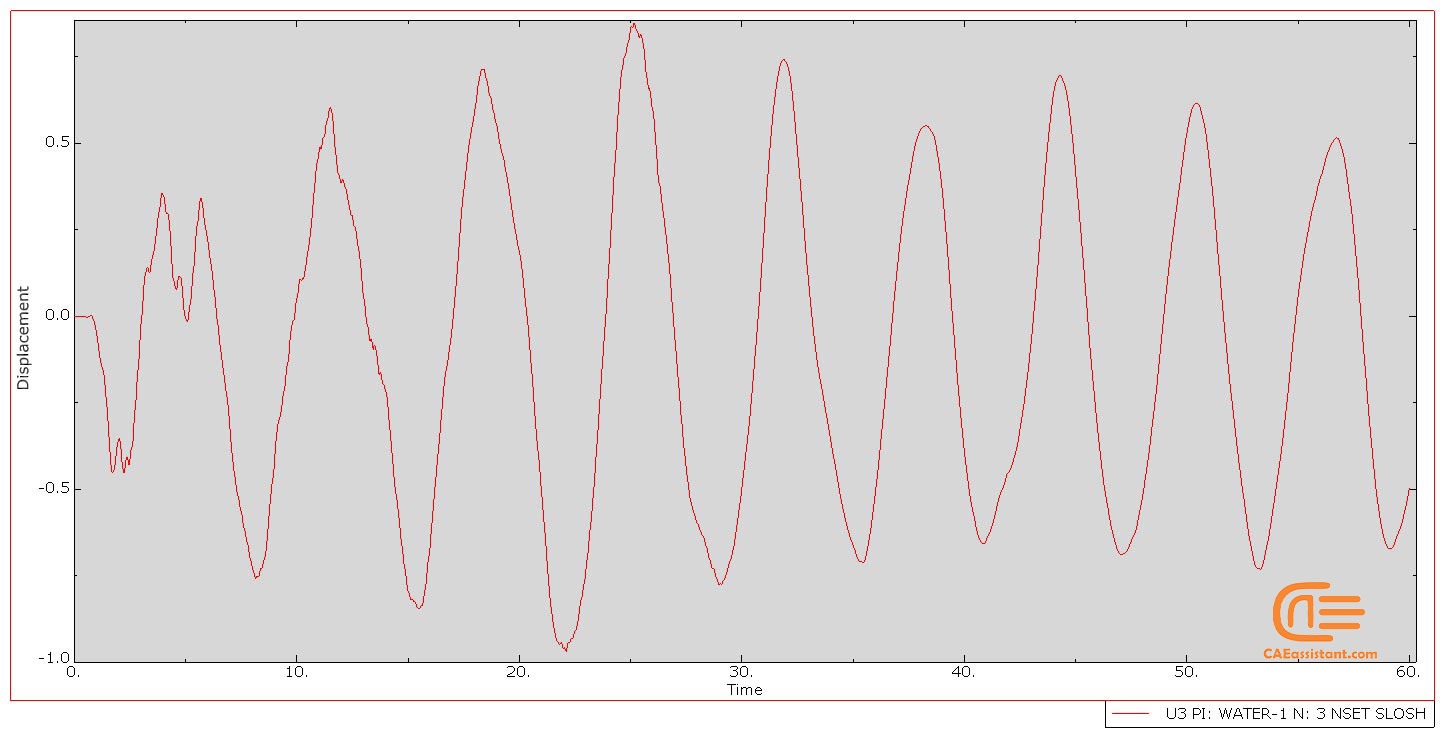
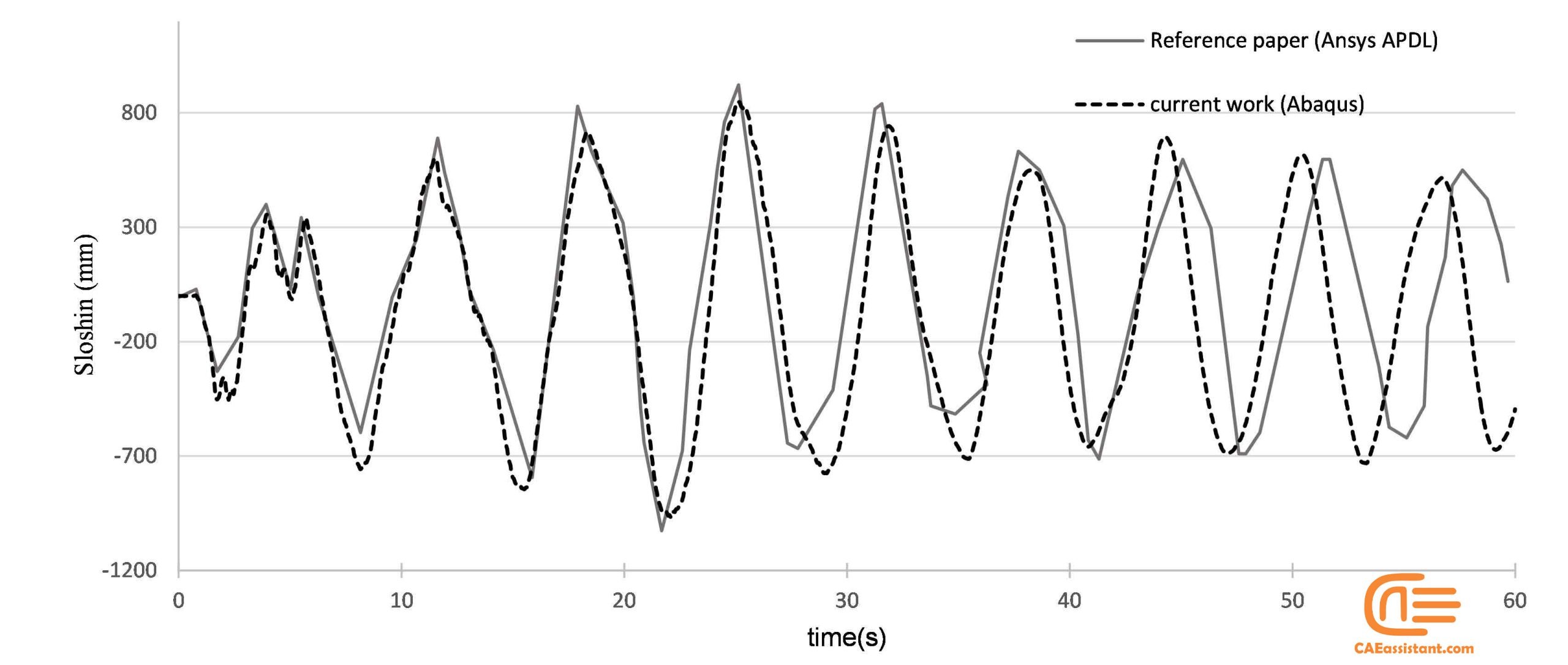

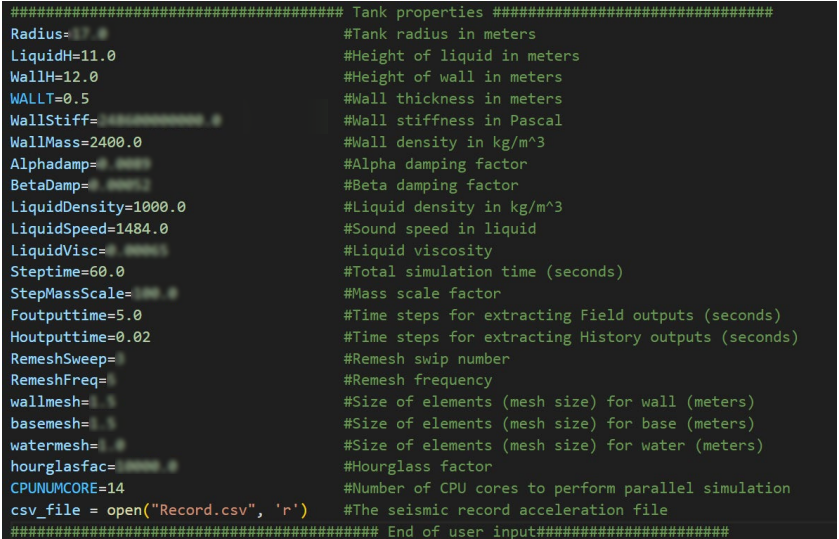
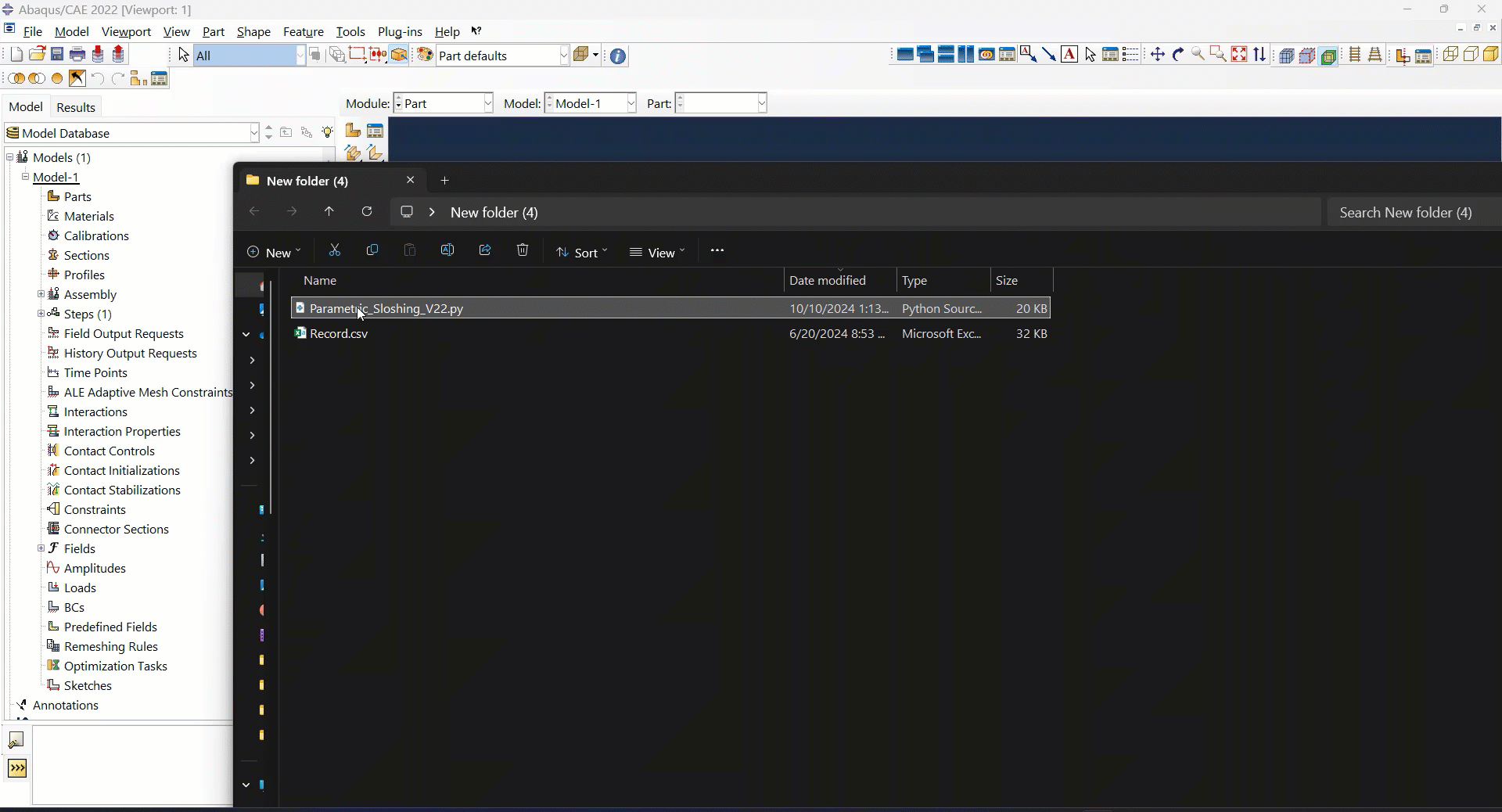
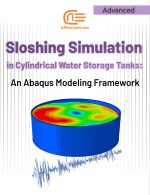
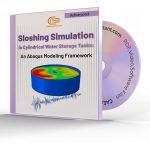
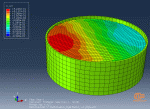
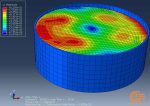

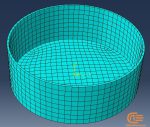
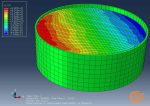









Anton –
This package is a valuable and useful resource. Using this package, I was able to fully learn how to simulate the sloshing of cylindrical water tanks and give an excellent presentation on the topic. I am completely satisfied with the content and quality of the package.
Additionally, I am interested in performing this simulation using Python scripts as well. Do you have any recommendations for me?
Experts Of CAE Assistant Group –
Yes. It is possible. You should first be completely learnt python scripting. Please let me know what is your level in python scripting? We have also some packages about it.